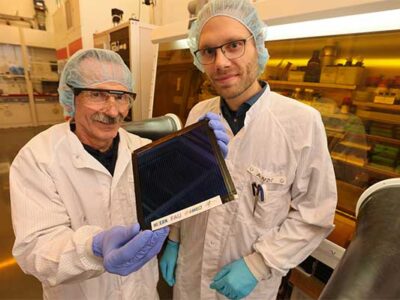- Solar panels and wind turbines coupled with energy storage offer a better hope for tackling climate change than trying to capture carbon from fossil fuel power stations.
- New research shows that resources that would be spent on developing and installing carbon capture technologies would be better invested in creating more solar panels and wind turbines and focusing on developing energy storage options to support these instead.
- According to new research by an international team of researchers from Lancaster University, Khalifa University, Clemson University, UiT The Arctic University and the University of Florence.
Solar panels and wind turbines coupled with energy storage offer a better hope for tackling climate change than trying to capture carbon from fossil fuel power stations, according to new research published by Nature Energy.
Carbon capture technologies — that is new, or as yet undeveloped, technologies that capture CO2 emissions from coal and gas-fired power stations — play a fundamental part within the models that serve as the basis of international agreements to tackle climate change, such as at the Paris Climate Change Agreement of 2015.
However, new research shows that resources that would be spent on developing and installing carbon capture technologies would be better invested in creating more solar panels and wind turbines and focusing on developing energy storage options to support these instead.
An international team of researchers from Lancaster University, Khalifa University, Clemson University, UiT The Arctic University and the University of Florence, have calculated the energy output after taking into account the energy needed to create and operate the system, for carbon capture technologies across a range of fossil fuel power stations — including coal and natural gas.
They compared these results with the energy return on energy invested for renewable energy systems, such as wind farms and solar panels, combined with various kinds of energy storage systems, such as batteries, hydrogen or pumped hydro-power and discovered that worst cases of renewables, with storage, compare to the best examples of carbon capture.
The researchers calculate that this is, in part, due to net energy losses from implementing carbon capture — which includes penalties caused by the energy needed to build, and then operate, the carbon capture and storage processes. In addition, the equipment, such as pipes and compressors, needed to capture and store carbon also needs energy to produce — which is known as embodied energy.
All this results in a reduced net energy output from power stations with carbon capture.
The energy return on energy invested for wind turbines and solar panels depends on the energy costs to build the panels and turbines themselves, and also on how sunny or windy the place is where they are installed.
However, even moderately efficient renewable locations provide a better energy return than the majority of carbon capture technologies.
Dr Denes Csala, a Lecturer in Energy Storage and System Dynamics at Lancaster University and co-author of the research, said: “It is more valuable, energetically, to invest the available energy resources directly into building new renewable energy and storage capacity rather than building new fossil-fuel power stations with carbon capture.
“The better net energy return of investing in renewable energy makes it more likely to meet emission targets without risking a reduction in energy availability, due to dwindling fossil fuel supplies and a climate-constrained emissions budget.
“Given its net energy disadvantages, carbon capture and storage should be considered a niche and supplementary contributor to the energy system, rather than be seen as a critical technology option as current climate agreements view it.”













Comments